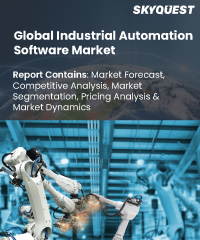
Product ID: SQMIG20I2176

Report ID:
SQMIG20I2176 |
Region:
Global |
Published Date: February, 2024
Pages:
250
|
Tables:
106 |
Figures:
76
Europe is likely to dominate the market during the forecast period. One of the most progressive fields in German mechanical engineering is the robotics and automation sector. Among the top R&A businesses in the world are German OEMs. The main advantages of a global hub that accommodates robotics businesses from various market sectors are thought to be human-robot cooperation (HRC) and machine vision (MV) technology. There will be more uses for collaborative robots and traditional industrial robots as a result of technological advancements in artificial intelligence, including machine learning and deep learning.
Over the past ten years, Germany and Europe have seen rapid growth in the machine vision business. Other industries, such as the metal, food, and packaging, as well as non-manufacturing ones (such as intelligent traffic technology, medical diagnostic equipment, and surgical technologies), are increasingly using machine vision technology outside of the automotive industry and the electrical and electronics industries (including semiconductors).
During the forecast period of 2021-2028, Asia Pacific is expected to have a considerable growth rate. The majority of robots and factory automation systems are produced in Japan. The need for industrial automation in the area is influenced by the existence of robotics and factory automation products and manufacturing firms throughout Japan, including Omron Corp., Yaskawa Electric, Yokogawa Electric, Mitsubishi Electric, and Nidec Corp.
A significant supplier of sensors, batteries, microchips, and other loT system components is China. Additionally, government programs in India like Make in India and MSME help small and medium-sized companies embrace cutting-edge manufacturing techniques. The government's aggressive measures in this area are anticipated to fuel market expansion.
The sophisticated manufacturing capabilities and effective trading procedures used by businesses will cause North America to see tremendous growth in the years to come. Throughout the upcoming years, there will likely be noticeable expansion in the Middle East and Africa. Due to the region's growing digital transformation, artificial intelligence and robotic process automation adoption is expected to experience stable market expansion in South America. Brazil presents a significant potential for automation businesses due to the country's rising need for advanced technology.
Our industry expert will work with you to provide you with customized data in a short amount of time.
REQUEST FREE CUSTOMIZATIONThe need for industrial automation software is being driven by the increasingly dynamic requirements of diverse sectors as well as sophisticated operations and procedures. It reduces the number of machine hours needed for processes, which is only achievable with reliable software.
Want to customize this report? This report can be personalized according to your needs. Our analysts and industry experts will work directly with you to understand your requirements and provide you with customized data in a short amount of time. We offer $1000 worth of FREE customization at the time of purchase.

Product ID: SQMIG20I2176